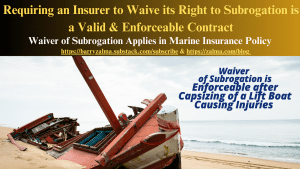What is not protected by homeowners insurance?
What is not protected by homeowners insurance?
Termites and insect damage, bird or rodent damage, rust, rot, mold, and general wear and tear are not covered. Damage caused by smog or smoke from industrial or agricultural operations is also not covered. If something is poorly made or has a hidden defect, this is generally excluded and won’t be covered.
What are the two types of homeowners insurance?
Types of homeowners insurance HO-1: The most basic and limited type of policy for single-family homes, HO-1s are all but nonexistent nowadays. HO-2: A more commonly used policy and a slight upgrade from the HO-1. HO-3: The most common type of homeowners insurance policy with broader coverage than the HO-2. More items… • Sep 16, 2021
What area is not protected by most homeowners insurance?
In most cases, earthquakes, landslides, and sinkholes aren’t covered. The good news is separate policies exist for these types of events. 3 It’s important to determine whether you live in a state or area that is prone to one or more of these perils.
Will homeowners insurance pay for a new roof?
Most homeowners insurance policies cover roof replacement if the damage is the result of an act of nature or sudden accidental event. Most homeowners insurance policies won’t pay to replace or repair a roof that’s gradually deteriorating due to wear-and-tear or neglect.
Can you smell mold in walls?
If you don’t see signs of mold but you can smell it, it may be hidden in your walls. A musty smell is a good indicator that mold is growing in your home. The smell of mold feels earthy, like rotting leaves or decaying wood in a dense, damp forest. Jun 13, 2018
How serious is black mold in a house?
Based on current research, black mold exposure is no more dangerous than any other type of mold exposure. It is impossible to avoid exposure to mold — the spores are almost everywhere around us. In high amounts or in people with allergies, exposure to any mold may cause allergy symptoms.
What is covered under Coverage B other structures?
Coverage B, also known as other structures insurance coverage, is the part of your homeowners policy that protects structures on your property not physically connected to your home, such as a detached garage, storage shed, or gazebo.
Can I remove other structures coverage?
Removing “”Other Structure”” Coverage Even if you have none of these items, your provider will not allow you to delete it. They are not charging an additional premium for the protection of these items.
What is insurance coverage C?
Personal property coverage, which is Coverage C within home insurance policies, helps to pay for your personal items that have been damaged, destroyed or stolen due to a covered peril. It’s standard protection within many home insurance policies and is pivotal to cover those personal items that mean the most to you.
What happens if you under insure your house?
Best practice suggests a property is underinsured if an insurance policy covers 90 per cent or less of the rebuilding costs. If you are underinsured, it means you have paid for an insurance policy that doesn’t cover the full cost of your potential loss or the financial impact on yourselves and your family or business.
What is the 80/20 rule in home insurance?
The ’80/20 Rule’ Most insurance companies require you to insure your home for a minimum of 80% of the replacement cost. (100% coverage is better, but most insurance companies will pay out a full claim if you have 80% of the replacement cost covered.) Mar 13, 2018
Is homeowners insurance based on square footage?
Your homeowners insurance premium may be influenced by: Your home’s square footage: Larger homes tend to cost more to insure because there would be more space to repair if it were damaged. Sep 28, 2021
Is HO5 better than HO3?
An HO-3 policy only covers personal property for named perils, while an HO-5 policy covers personal property for open perils. In simple terms, this means an HO-5 insurance policy is more comprehensive and covers damage to your personal property in all cases, except damage specifically excluded from your policy.
What’s an HO5 policy?
An HO5 insurance policy is a type of homeowners insurance policy that provides broader protection and higher coverage limits than the typical options.
What is covered under HO-5?
Dwelling: HO-5 dwelling coverage protects your home’s main structure, including its exterior and interior walls, foundation and roof. Other structures: This type of coverage protects detached structures on your property, like fences, gazebos, guest houses and swimming pools. Aug 5, 2020



